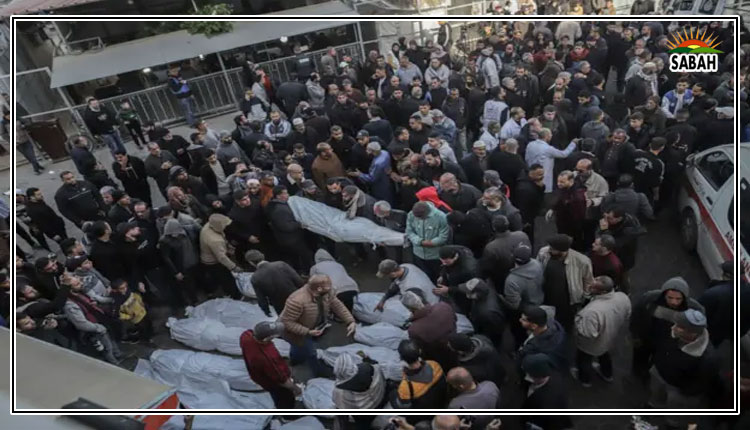Our endemic inflation…Riaz Riazuddin
HAS inflation in Pakistan become endemic? In terms of its intensity, the spell of inflation being experienced today has not been witnessed earlier. Consumer Price Index (CPI) inflation has been running at over 30 per cent, year-on-year (YoY), for the last three months. The intensity with which weekly inflation is rising (over 40pc) in terms of the Sensitive Price Indicator shows that CPI inflation will remain very high in the coming months.
Pakistan has never experienced YoY inflation higher than 30pc, although it has come close to it a few times. April 2023 was the 11th consecutive month in which inflation was over 20pc, and the 18th consecutive month where it was more than 10pc. We have seen much longer spells of CPI inflation in our history, but all less than 30pc YoY.
The longest round of high inflation (greater than 10pc) in Pakistan was seen from February 1972 to January 1976 47 months in a row. Surprisingly, that spell started much earlier than the international oil price shock of October 1973 when the price of crude oil jumped from $3 per barrel to almost $12 a four-fold, or 300pc, increase. Inflation then had been running between 10pc to 22pc, even before the shock that jolted the entire world. Of the 47 months mentioned, inflation was higher than 20pc over 25 consecutive months. One of the main reasons for higher inflation was the fact that money supply growth exceeded its long-term average over a year earlier than the oil price shock. Hence, both demand-pull and cost-push factors were responsible for high inflation in our country in the 1970s.
Compared to the longest spell of high inflation in the 1970s, the high inflation episode of 2007-08, that was immediately followed by the global financial crisis (accompanied by the oil price shock) was relatively shortlived. Oil prices rose from $87 per barrel in January 2007 to $194 in June 2008, but quickly came down to $64 in January 2009 before stabilising at $120. While CPI inflation rose to as high as 26.1pc in August 2008, the inflation spell (higher than 10pc) was confined to 18 months from January 2008 to June 2009. During this period, inflation was higher than 20pc for nine consecutive months. Money supply growth was higher than normal since March 2007, which was another factor behind the high inflation.
The present inflation should be analysed in the context of historical perspective.
The high inflation spell of the 1990s was also very long (if we ignore a few months between October 1993 and September 1997). It was as long as 48 months. Inflation during this period was mostly above 10pc, but never went higher than 15pc on a YoY basis. As usual with other episodes of high inflation, this period was also preceded by high growth of money supply. Inflation was ultimately reined in by containing money growth to its long-term average during the mid-1990s. A similar, but less extensive spell occurred in the early 1980s preceded by high growth in money supply.
The present round of inflation should be analysed in the context of this historical perspective of high inflation episodes. Causes of current inflation include both cost-push and demand-pull (including an accommodative monetary policy) factors. But the underlying reasons are much more complex than in earlier spells. One example of complexity is embedded in how the State Bank is managing the allocation of available foreign exchange to importers. It has erected a system of prioritised allocation, which is like rationing foreign exchange and results in extremely high, and discriminatory prices of imported items that have low priority. For example, a Philips LED bulb which cost as little over Rs200 last year is now priced at Rs600.
This system is inferior to one which relies on a market-based exchange rate for allocating foreign exchange. While the rationing effectively constrains imports, it ironically accentuates the shortage of foreign exchange by creating a sizable wedge between the official and kerb market exchange rates. Higher hawala-hundi rates lower the supply of remittances through banking channels, causing import prices to rise further. A true market-based exchange rate would also have raised the domestic prices of imports with the pass-through of the exchange rate. However, the price increase would be much lower than that being witnessed currently under a system akin to rationing, and with an artificially depressed exchange rate. Hence inflationary pressures are much higher.
Another major reason for high inflation is the prevailing political instability. Consumer and business confidence indices are at their lowest levels. Several research studies abroad and here establish a positive link between the measures of political instability and inflation. Research published in SBP Working Paper No. 29 (2009) presents a strong case in this respect for Pakistan. The states fragility is deteriorating day by day with critical institutions at loggerheads with each other. The Fund for Peace, an international organisation, prepares the Fragile State Index for 179 countries including Pakistan and releases it annually. According to its 2022 report, Pakistan with an index of 89.7 ranks as the 30th most fragile state among 179 countries. The higher the index level, the lower the level of stability. More fragile countries include Burkina Faso, Lebanon and Guinea Bissau, etc.
Why does inflation become higher when theres low citizen confidence and greater political instability? One reason is that producers of goods and services face greater uncertainty regarding their rising costs of inputs. Under normal circumstances they reprice their products once or twice a year to maintain their profit margins. In uncertain times, along with rationing import procedures, they are sure of rising input costs, but unsure about the margin by which they will increase; they reprice their products very frequently out of nervousness. Hence inflation rises more quickly. The profit margins of producers may also rise in this situation.
It seems that high inflation will be here for an exceptionally long spell, even if we see some reduction in the coming months due to base effects. The way to break the spell of high inflation lies in reducing political tensions, holding free and fair elections, and moving towards a credible macroeconomic adjustment programme with the IMFs help. Otherwise, the risk of hyper-inflation and default will escalate.
The writer is a former deputy governor of the State Bank of Pakistan.
rriazuddin@gmail.com
Courtesy Dawn, May 20th, 2023












